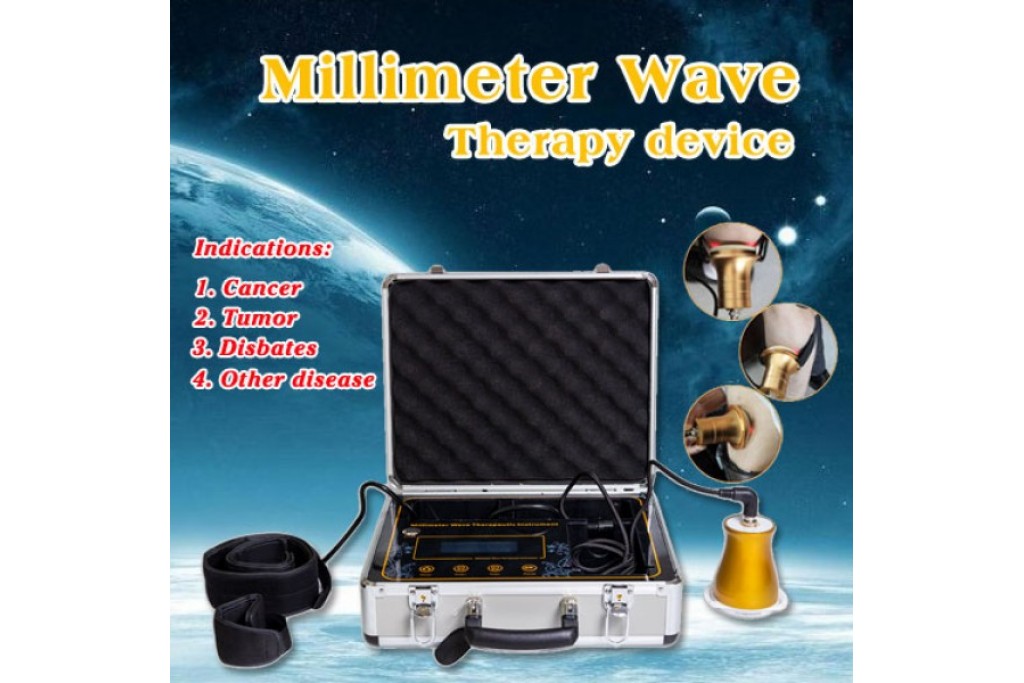Effect of Millimeter Wave Therapy on the T cell Functions
- Chris
- July 07, 2025
- 87
- 0
- 0
Effect of Millimeter Wave Therapy on the T cell Functions
Our studies have shown that MMWT enhance T cell-mediated immunity. A delayed type hypersensitivity (DTH) assay in mouse skin was used to measure this effect [22]. Development of the DTH reaction in mouse or human skin has been shown to involve antigen-specific, T cell-mediated, memory dependent immunity [23,24]. Furthermore, we have examined whether MMWT can modulate T cell recovery after suppression with cyclophosphamide (CPA), an anticancer drug [25,26]. CPA is an alkylating agent that can prevent cell division by cross-linking DNA, leading to the reduction of tumor growth [27,28]. In addition to its cytotoxic effect on tumor cells, CPA is known to have multiple effects on the immune system resulting in a general depletion of immuno-competent cells [29]. A major side effect of this drug in chemotherapy is suppression of humoral and T cell-mediated immunity [30,31]. Among the problems associated with chemotherapy, restoration of immunocompetence is a critical issue to protect patients from secondary infections [30]. T cells have an impact on practically all aspects of immunity due to their ability to induce specific immune responses in both T and B cells. Also, T cells play an important role in the restoration process.
T cell functioning can be divided into an activation phase in which T cells divide and differentiate; and an effector phase, in which their function is expressed. Several basic effector functions have been defined for T cells: cytotoxic CD8+ T cells, directly kill infected cells, while, CD4+ -helper T (Th) cells can activate either B cells or macrophages in ways that are determined by the cytokines they produce. Pro inflammatory cytokines, produced by Th1 cells, such as IFN-γ, activate, macrophages.and cytotoxic T cells; anti-inflammatory cytokines such as IL-10 produced by Th2 cells activate B cells. Our studies have shown that MMWs can restore production of IFN-γ and proliferation of T cells suppressed by CPA treatment. Conversely, no significant changes were observed in the level of IL-10 and proliferation of B cells. These results suggest that MMWs accelerate the recovery process selectively through a T cell-mediated immune response [25,26].
T cells play an important role in defense against tumor cells. Tumor cells can suppress functions of dendritic cells and macrophages thereby causing them to be incapable of stimulating and activating T cells sufficiently [32]. Considering the importance of these cells, clinical studies related to immunotherapy with activated T cells have been performed for various tumor types with promising results [33 35]. In view of our studies that MMWs can restore functions of T cells suppressed by chemotherapy, combined therapy should be very useful in cancer treatment.
Effect of Millimeter Wave Radiation on Natural Killer Cells
NK cells are known to kill a wide variety of tumor cells while sparing normal cells [36,37]. NK cells represent a distinct population of lymphocytes in terms of both phenotype and function [38]. They have large granular lymphocyte morphology and express characteristic cell surface receptors, such as the NK cell receptor protein-1 (termed NK1.1). NK cells mediate resistance to viral infections and cancer development and exhibit cytotoxic activity, which is nonrestricted to MHC (major histocompatibility complex) [39,40]. Thus, NK cells represent major effector cells of innate immunity. In addition, NK cells possess a variety of other functions, including the ability to produce a number of cytokines, involved in the modulation of hematopoiesis, immune responses and in the regulation of their own activities [41-43].
Our studies [44] have shown that treatment of mice with CPA, an anti-cancer drug, resulted in a significant suppression in cytolytic activity of NK cells. It was interesting to observe that irradiation of CPA treated mice with MMWs, accelerated the recovery of NK cell activity. It was further demonstrated that MMW irradiation significantly augment TNF-α production by NK cells suppressed by CPA administration. T his observation supports the idea that the immunomodulatory effect of MMW irradiation could be beneficial when used in combination with chemotherapy. Similar results on the effect of MMWs on NK cell activity were reported by Novoselova et al. [15] who studied the effect of MMWs on the immune system in mice with experimental tumors. MMW irradiation caused a significant increase in the production of TNF-α, nitric oxide and NK cell activity at the early stage of tumor development. MMW irradiation has also been shown to restore splenic NK cell activity suppressed by painful electric stimulation of the hind limbs in rats [45].
Several NK cell based immunotherapies have been developed in recent years [46], These include activation of a Patient’s NK cells by injecting different cytokines such as IL-1,IL-2, IL-12 IL 15, and IL 18 etc. Most commonly, IL-2 has been used for immunotherapy. It enhances NK cell-mediated IFN-γ production. The antitumor effect of IL-12 and IL-18 are also associated with upregulation of IFN-γ production by T cells and NK cells. IFN-γ has been shown to suppress tumor angiogenesis, and induce apoptosis in a variety of tumor cells by activating death receptors of the TNF super family. These include mainly FAS ligand receptors and TRAIL receptors [46]. However there are several limitations in the use of cytokines given exogenously for cancer treatment. Toxicity of systemic cytokine administration, and cytokine activated apoptosis of NK cells are two major limitations of cytokine mediated immunotherapies. Studies by us and others have shown that irradiation with millimeter waves increase the production of IFN-γ, TNF-α, IL-2 and enhance the cytotoxic activity of NK cells in vivo [44]. Therefore, immunotherapy by MMW should offer an advantage over the cytokine therapy given systemically. However, further experimental and clinical studies are needed to confirm this f inding.

